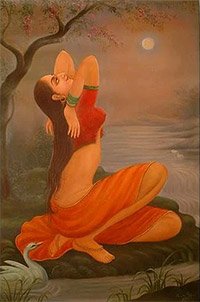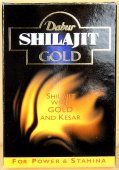Kamasutra, Kāmasūtra, Kama-sutra: 8 definitions
Introduction:
Kamasutra means something in Hinduism, Sanskrit. If you want to know the exact meaning, history, etymology or English translation of this term then check out the descriptions on this page. Add your comment or reference to a book if you want to contribute to this summary article.
In Hinduism
Kama-shastra (the science of Love-making)
Source: Wikipedia: KāmaśāstraKāmasūtra (कामसूत्र) (lit. “principles of love”') is an ancient Indian Sanskrit text on sexuality, eroticism and emotional fulfillment in life.—The Kāmasūtra is a Sūtra-genre text with terse aphoristic verses that have survived into the modern era with different bhāṣyas (exposition and commentaries). The Kāmasūtra acknowledges the Hindu concept of Puruṣārthas, and lists desire, sexuality, and emotional fulfillment as one of the proper goals of life. Its chapters discuss methods for courtship, training in the arts to be socially engaging, finding a partner, flirting, maintaining power in a married life, when and how to commit adultery, sexual positions, and other topics.

Kamashastra (कामशास्त्र, kāmaśāstra) deals with ancient Indian science of love-making, passion, emotions and other related topics dealing with the pleasures of the senses.
Languages of India and abroad
Sanskrit dictionary
Source: DDSA: The practical Sanskrit-English dictionaryKāmasūtra (कामसूत्र).—
1) Name of an erotic work by Vātsyāyana.
2) 'thread of love', love-incident' औद्धत्यमायोजितकामसूत्रम् (auddhatyamāyojitakāmasūtram) Mālatīmādhava (Bombay) 1.4.
Derivable forms: kāmasūtram (कामसूत्रम्).
Kāmasūtra is a Sanskrit compound consisting of the terms kāma and sūtra (सूत्र).
Source: Cologne Digital Sanskrit Dictionaries: Cappeller Sanskrit-English DictionaryKāmasūtra (कामसूत्र).—[neuter] the thread of love, also a love-manual.
Source: Cologne Digital Sanskrit Dictionaries: Aufrecht Catalogus Catalogorum1) Kāmasūtra (कामसूत्र) as mentioned in Aufrecht’s Catalogus Catalogorum:—by Vātsyāyana. Io. 396. Oxf. 215^a L. 183. K. 248. B. 3, 56. Bik. 535. Rādh. 46. Np. Viii, 66. Jac. 696. Oppert. 2697. Ii, 6144.
—[commentary] Bik. 535.
—[commentary] by Bhāskara Nṛsiṃha, composed in Benares in 1788. Oxf. 215^a. Oudh. Viii, 2 (Narahari Śāstrin).
—[commentary] Jayamaṅgalā by Yaśodhara. L. 2107. K. 248. Bik. 535. Jac. 696. Peters. 2, 190.
—[commentary] Kandarpacūḍāmaṇi, composed in 1577 by Vīrabhadra. Khn. 52. Bik. 532. Peters. 2, 66. 190.
2) Kāmasūtra (कामसूत्र):—by Vātsyāyana. Bl. 335. Peters. 4, 25. Stein 64 ([fragmentary]). Weber 2237.
—[commentary] by Bhāskara Nṛsiṃha. Peters. 4, 25.
—[commentary] by Malladeva. Peters. 4, 25.
—[commentary] Jayamaṅgalā by Yaśodhara. Stein 64 ([fragmentary]). Weber 2238.
—[commentary] Kandarpacūḍāmaṇi by Vīrabhadra. Stein 64.
3) Kāmasūtra (कामसूत्र):—by Vātsyāyana. Ulwar 1054 (inc.).
—[commentary] Jayamaṅgalā by Yaśodhara. Ulwar 1055.
4) Kāmasūtra (कामसूत्र):—by Vātsyāyana. Bd. 985. Hz. 991. Il. Śg. 1, 57. 2, 305. C. by Bhāskara Nṛsiṃha. As p. 40. Bd. 985.
Source: Cologne Digital Sanskrit Dictionaries: Monier-Williams Sanskrit-English DictionaryKāmasūtra (कामसूत्र):—[=kāma-sūtra] [from kāma] n. Name of a treatise on sexual love by Vātsyāyana.
[Sanskrit to German]
Sanskrit, also spelled संस्कृतम् (saṃskṛtam), is an ancient language of India commonly seen as the grandmother of the Indo-European language family (even English!). Closely allied with Prakrit and Pali, Sanskrit is more exhaustive in both grammar and terms and has the most extensive collection of literature in the world, greatly surpassing its sister-languages Greek and Latin.
Kannada-English dictionary
Source: Alar: Kannada-English corpusKāmasūtra (ಕಾಮಸೂತ್ರ):—
1) [noun] the skill in and understanding of erotic matters.
2) [noun] a treatise on love, techniques of love making, sexual intercourse, healthy sexual life, etc. written by Vātsyāyana Mallanāga (about 4-5th century A.D.); (also known as Kāma Sūtra).
3) [noun] any treatise dealing with this subject.
Kannada is a Dravidian language (as opposed to the Indo-European language family) mainly spoken in the southwestern region of India.
See also (Relevant definitions)
Starts with: Kamasutrakara.
Full-text (+317): Vatsyayana, Kamashastra, Raga, Vatsyayaniya, Kamatantra, Sadrishya, Vatsyayan, Utsadana, Auddhatya, Bhava, Bhahkaranrisimha, Nimittajnana, Alekhya, Takshana, Dance, Floral decoration, Water sport, Yantramatrika, Nandikeshvara, Kanyasamprayuktaka.
Relevant text
Search found 25 books and stories containing Kamasutra, Kāmasūtra, Kama-sutra, Kāma-sūtra; (plurals include: Kamasutras, Kāmasūtras, sutras, sūtras). You can also click to the full overview containing English textual excerpts. Below are direct links for the most relevant articles:
Kamashastra Discourse (Life in Ancient India) (by Nidheesh Kannan B.)
1. Authorship and Date of the Kāmasūtra < [Chapter 3 - A Thematic Analysis of Vātsyāyanakāmasūtra]
4.1. Summary of Kāma-sūtra Book 7: Aupaniṣadika < [Chapter 3 - A Thematic Analysis of Vātsyāyanakāmasūtra]
Kathasaritsagara (the Ocean of Story) (by Somadeva)
Note on nail-marks and tooth-bites < [Notes]
The ten stages of love-sickness < [Notes]
Vetāla 21: Anaṅgamañjarī, her Husband Maṇivarman and the Brāhman Kamalākara < [Appendix 6.1 - The Twenty-five Tales of a Vetāla]
Kautilya Arthashastra (by R. Shamasastry)
Malatimadhava (study) (by Jintu Moni Dutta)
Part 2 - A Note on the Mālatīmādhava < [Chapter 1 - Introduction]
Part 3 - Art and Architecture in the Mālatīmādhava and 8th-century India < [Chapter 4 - Cultural Aspects of the Mālatīmādhava]
Part 1a - The Life of Bhavabhūti < [Chapter 1 - Introduction]
Kavyamimamsa of Rajasekhara (Study) (by Debabrata Barai)
Part 5 - Rājaśekhara’s Discussion on Daily Routine < [Chapter 5 - Analyasis and Interpretations of the Kāvyamīmāṃsā]
Part 5.1 - Environment and Retreat of Kavi (poets) < [Chapter 5 - Analyasis and Interpretations of the Kāvyamīmāṃsā]
Part 3.6 - Distinguish between Pratibhā and Vyutpatti < [Chapter 5 - Analyasis and Interpretations of the Kāvyamīmāṃsā]
Vishnudharmottara Purana (Art and Architecture) (by Bhagyashree Sarma)
3. A General Note on Art < [Chapter 1 - Introduction]
2. The Importance of the Term Citra < [Chapter 5 - Painting and Image Making]
4. A General Note on Architecture < [Chapter 1 - Introduction]
Related products


